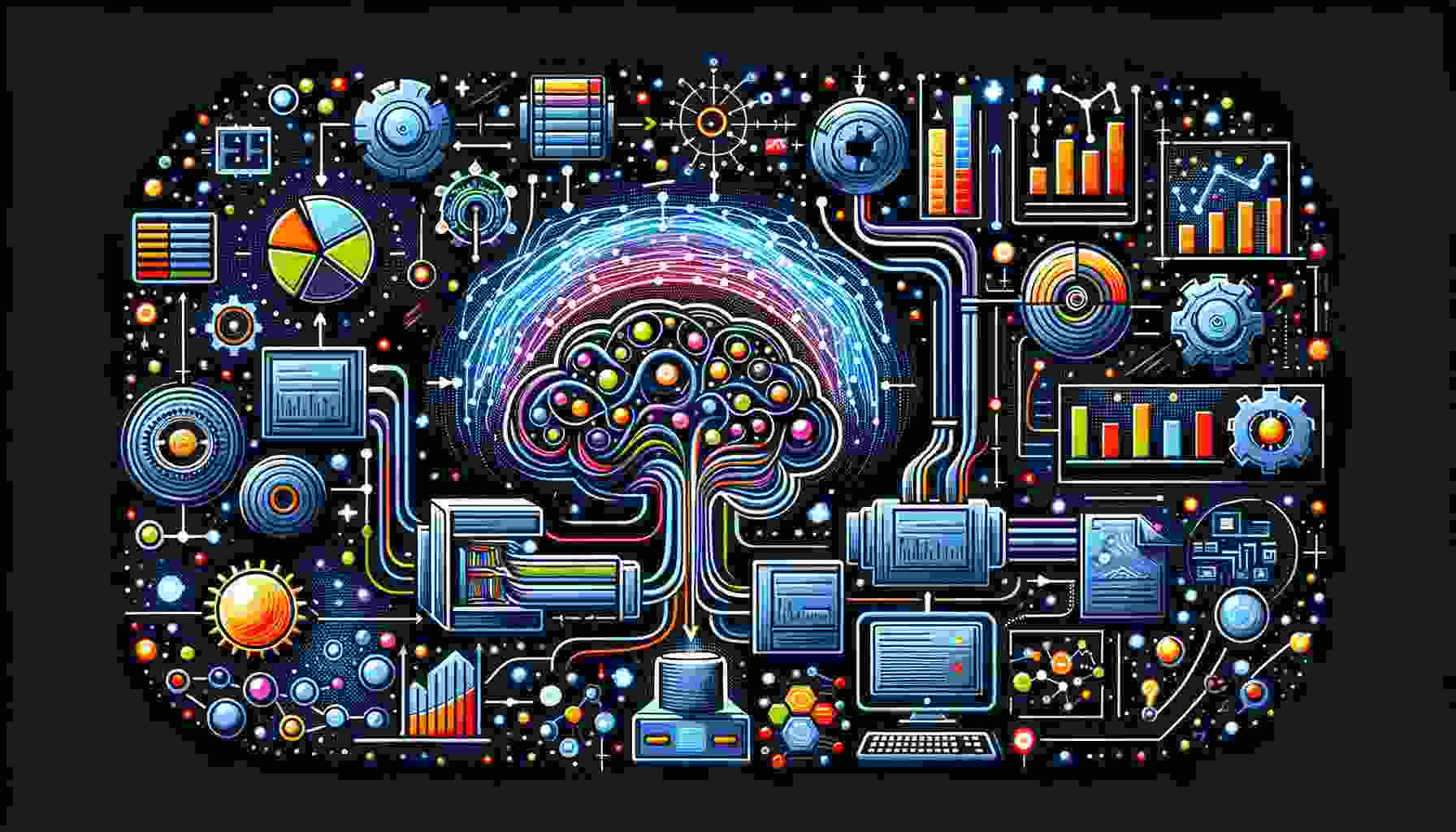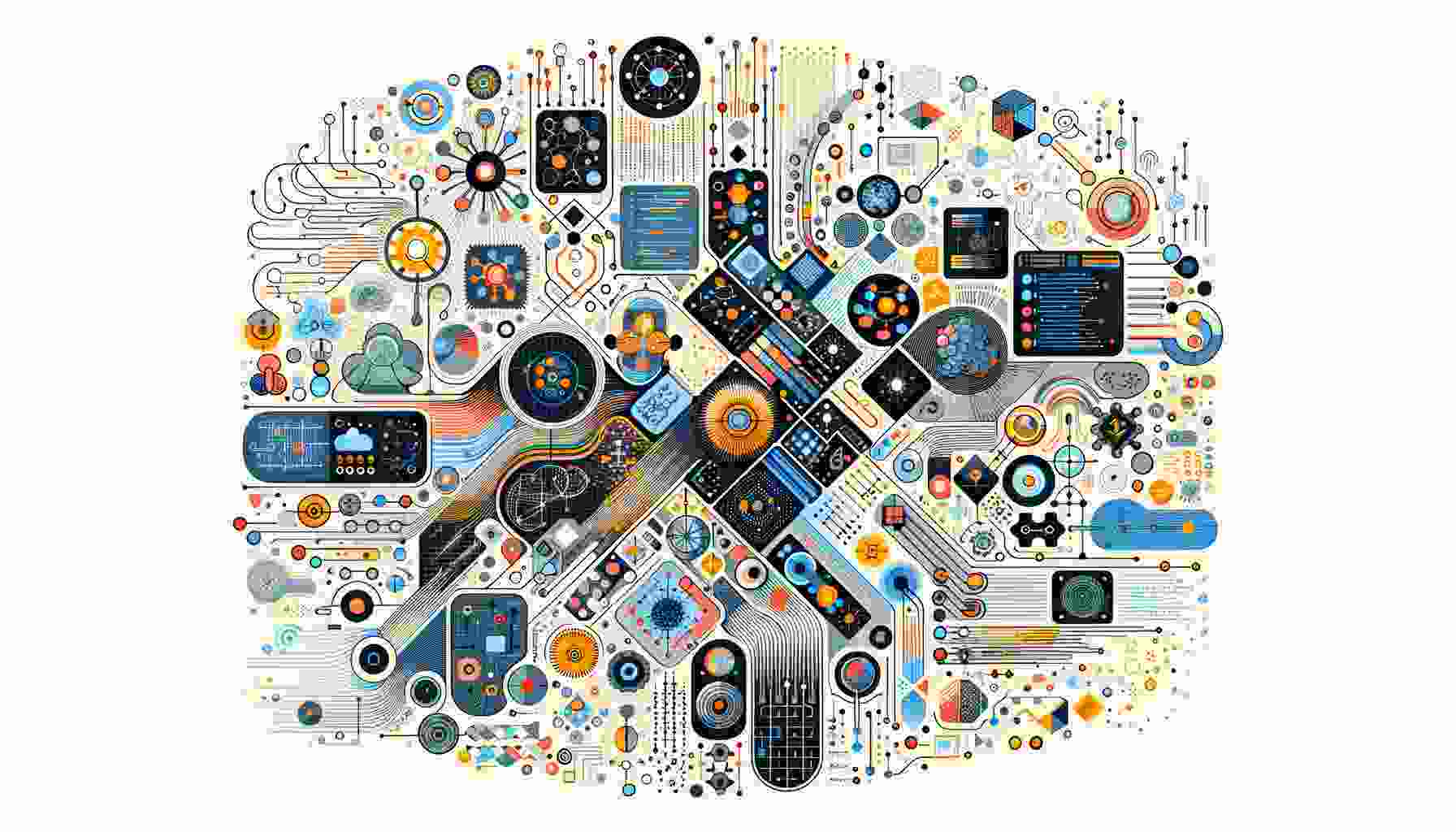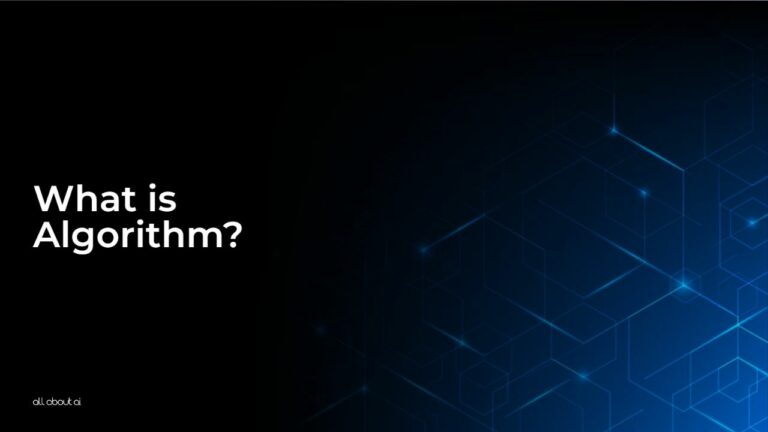Algorithms are structured sets of instructions that computers use to perform tasks or solve problems. They are fundamental to all aspects of computing, from basic data processing to the complex decision-making behind AI technologies.
Algorithms translate complex problems into understandable and executable steps, enabling machines to perform tasks with speed and efficiency unmatched by human capabilities.
In this article, we will define “what is algorithm?” in detail, along with its types, concepts, and more. So, why stop? Keep reading the article written by AI practitioners at All About AI.
Imagine you have a recipe for making a chocolate cake. This recipe tells you exactly what ingredients you need, what to do with them, and in what order. In the world of computers, algorithms are like these recipes. They give computers a set of steps to follow so they can do tasks or solve puzzles. Algorithms are super important for everything computers do, from helping your video game run smoothly to making smart robots think and make decisions. They turn big, tricky problems into easy steps that computers can follow quickly and perfectly, doing things much faster than people can. Just like how you might follow a simple recipe to make a sandwich or a more complex one for a big holiday dinner, there are all kinds of algorithms. Some are simple and do basic things, and some are really smart and help with big decisions, like how a self-driving car knows where to go. Keep Reading more about What is Algorithm!What is Algorithm? Secret Sauce of Tech Magic!
Importance of Algorithms:
Now that we have understood the basic concept of What is Algorithm, let’s move further by understanding their importance in different fields,
Essential in AI:
Algorithms form the core of artificial intelligence systems, allowing them to process vast datasets, learn from patterns, and make decisions with minimal human intervention. Their ability to analyze and interpret data makes AI smarter and more adaptable.
Foundation of Technology:
Beyond AI, algorithms drive the functionality of everything from search engines to autonomous vehicles, optimizing processes, enhancing user experiences, and enabling the rapid development of innovative solutions.
Versatile Applications:
Their application ranges from algorithmic trading in finance to the content recommendation engines of streaming services, showcasing their versatility across different fields.
Continuous Evolution:
The field of algorithms is continuously evolving, with new algorithms being developed to solve specific problems more efficiently, reflecting the dynamic nature of technology.
Critical for Problem-Solving:
In the digital age, the ability to design and implement effective algorithms equates to the power to solve some of the most challenging problems in science, engineering, and business.
Machine Learning and Algorithms
Machine learning (ML) represents a subset of AI focused on developing systems that learn from data.
At the heart of ML are algorithms that enable computers to identify patterns, make decisions, and improve their performance over time without being explicitly programmed for every task.

Adaptive Learning:
Machine learning algorithms adjust and refine their models based on incoming data, enhancing their ability to make accurate predictions or decisions.
Diverse Applications:
These algorithms are critical in powering applications like natural language processing, computer vision, and predictive analytics, demonstrating their wide applicability.
Efficiency at Scale:
They are designed to handle and analyze data at a scale and speed that humans cannot match, providing insights and solutions that can dramatically improve outcomes.
Continual Improvement:
The more data these algorithms are exposed to, the better they become at their tasks, learning from new information and adjusting their approaches accordingly.
Innovation Driver:
Machine learning algorithms are at the forefront of technological innovation, enabling the development of new products, services, and capabilities that were previously unimaginable.
Key Algorithms in ML
These are some of the key algorithms that are used in Machine Learning.
Neural Networks:
Neural Networks algorithms mimic the workings of the human brain, enabling the development of deep learning models that can handle tasks like image and speech recognition with remarkable accuracy.
Decision Trees:
By breaking down decisions into a tree-like model of choices, these algorithms simplify complex decision-making processes, making them useful for tasks ranging from customer segmentation to disease diagnosis.
Support Vector Machines (SVM):
SVMs are powerful in handling classification and regression tasks, especially in high-dimensional spaces, by finding the hyperplane that best separates different classes of data.
Random Forests:
This ensemble method improves upon decision trees by creating a ‘forest’ of trees and merging their predictions, which enhances the overall accuracy and reduces the risk of overfitting.
Gradient Boosting Machines (GBM):
GBMs sequentially construct new models to correct errors made by previous ones, effectively improving performance with each step and tackling a wide range of regression and classification problems.
How Do Algorithms Work?
At their core, algorithms are about taking inputs, performing a series of defined steps, and producing outputs. This process involves basic components that are common across all types of algorithms.
Input:
Every algorithm starts with input, which can range from simple numerical values to complex datasets. The input is the information that needs to be processed or the problem that needs to be solved.
Processing:
This is the heart of the algorithm, where the actual computation or logic is applied. It involves a sequence of steps or rules that transform the input into the desired outcome.
Output:
The output is the end result produced by the algorithm. It could be a simple answer, like the sum of two numbers, or a more complex result, like a predictive model or a sorted list.
Types of Algorithms
Now let’s discuss five basic types of algorithms:

Machine Learning Algorithms:
These are designed to learn from data, adapt their parameters, and improve their performance over time without being explicitly programmed for specific tasks.
Search Algorithms:
These algorithms navigate through data structures to find specific elements or paths between elements, crucial for tasks like database searches and pathfinding in maps.
Sorting Algorithms:
Sorting algorithms organize data into a predetermined order, facilitating easier data analysis and retrieval. Common examples include quicksort, mergesort, and bubblesort.
Graph Algorithms:
These algorithms are used to solve problems related to graphs and networks, such as finding the shortest path between nodes, which is essential for routing and network analysis.
Dynamic Programming Algorithms:
By breaking down problems into simpler sub-problems, dynamic programming algorithms efficiently solve complex problems, often used in optimization and sequence alignment tasks.
Real-World Applications of Algorithms
Algorithms play a crucial role in our daily lives, powering systems and processes we interact with regularly.
Their applications range from everyday conveniences to critical operations in various industries.
Navigation:
Algorithms in GPS services analyze data from multiple sources to provide real-time traffic updates and optimal routes, significantly reducing travel times and improving logistics.
Online Shopping:
Recommendation algorithms analyze your browsing and purchase history to personalize the shopping experience, suggesting products you’re more likely to buy.
Specialized Uses
Banking:
Fraud detection algorithms analyze transaction patterns to identify and prevent unauthorized activities, protecting customers and financial institutions.
Social Media:
Content algorithms curate personalized feeds for users, optimizing engagement by displaying posts, ads, and recommendations based on user interactions and preferences.
Healthcare:
In healthcare, algorithms process patient data to assist in diagnosing diseases, predicting outcomes, and personalizing treatment plans, thereby enhancing the quality of care.
The Future of Algorithms
The future of algorithms is poised for significant advancements, with emerging trends likely to revolutionize how we interact with technology and each other.
- AI Integration: As artificial intelligence becomes more sophisticated, algorithms will play an even larger role in enabling machines to understand and interact with the world in complex ways.
- Quantum Computing: Quantum algorithms have the potential to solve problems that are currently infeasible for classical computers, offering breakthroughs in cryptography, material science, and more.
- Ethical AI: There is a growing focus on developing algorithms that are not only efficient and effective but also fair, transparent, and unbiased, aiming to address ethical concerns in AI applications.
- Personalization: Advances in algorithms will enable even more personalized experiences across digital platforms, from customized learning plans in education to personalized healthcare treatments.
- Automation: The use of algorithms in automating routine tasks and processes across industries is expected to increase, freeing up human workers for more creative and strategic roles.
Understanding AI Simplified: Delve into our straightforward guides that clarify the intricacies of AI, proving invaluable for learners of all backgrounds and expertise.Want to Read More? Explore These AI Glossaries!
FAQs
What does algorithm mean in social media?
What are the 4 types of algorithms?
What are 5 things algorithms must have?
What is a famous algorithm?
Wrap Up
So, wrapping about What is Algorithm in AI, Algorithms are the invisible yet powerful forces that shape the digital landscape. From enhancing user experiences to solving complex problems, their impact is pervasive across all facets of technology and society.
As we continue to innovate and push the boundaries of what’s possible, understanding and improving algorithms will remain a key endeavor, promising to unlock new capabilities and opportunities in the AI and technology space.
In this article, we have discussed “what is algorithm,” its types, components, and everything related to it in detail. But this is not the only term we have explained in detail. To understand more AI-related concepts and terminologies, check more articles in our AI terminology database.





